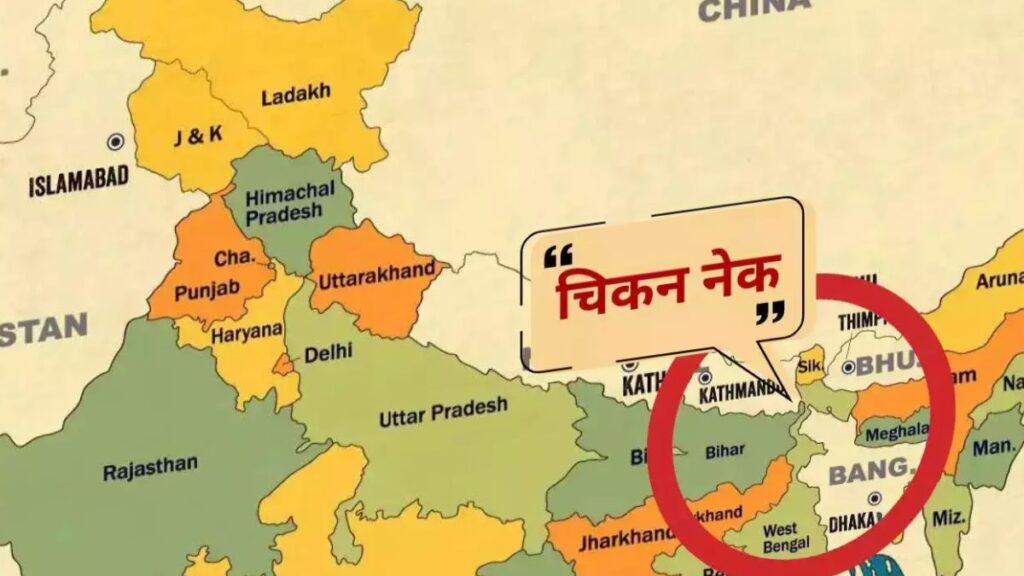India’s ‘Chicken’s Neck’ Under Spotlight: Why the Siliguri Corridor Matters More Than Ever

A narrow 22-kilometer-wide land strip in West Bengal, famously known as the Chicken’s Neck, has once again emerged at the center of a geopolitical storm. Officially called the Siliguri Corridor, this slender stretch is India’s sole land route connecting its eight northeastern states to the rest of the country. Though long recognized as a strategic chokepoint, recent developments have thrust it back into the national spotlight.
The renewed attention comes after controversial comments by Bangladesh’s interim chief advisor Muhammad Yunus, who, during a visit to China, referred to India’s northeastern region as “landlocked” and implied Bangladesh held the key to its ocean access. This statement, seen by Indian leaders as diplomatically provocative, has triggered sharp responses across the political spectrum.
Assam Chief Minister Himanta Biswa Sarma called Yunus’s remarks “offensive and strongly condemnable,” adding that they reinforced concerns over the region’s vulnerability. Former Manipur Chief Minister N Biren Singh accused Bangladesh of trying to treat India’s Northeast as a “strategic pawn,” urging caution and restraint from Dhaka. The Assam Jatiya Parishad (AJP) echoed these sentiments, branding the comments “provocative and unacceptable.”
A Lifeline with Strategic Stakes
The Siliguri Corridor isn’t just a transport route; it’s a strategic lifeline. Flanked by Nepal to the west and Bangladesh to the east, with Bhutan and China not far off, this narrow land passage is vital for both civilian and military movement. In times of conflict or instability, any disruption here could effectively sever the Northeast from the rest of India — a chilling scenario for policymakers.
The 2017 Doklam standoff with China amplified these anxieties, showcasing how close the corridor is to contested and sensitive border areas. At present, a single railway line remains the main artery through the region — a logistical vulnerability that India is actively working to address.
India’s Push for Diversified Connectivity
To mitigate risks associated with the Siliguri Corridor, India has been exploring alternative connectivity options — notably through its eastern neighbor, Bangladesh. The longstanding India-Bangladesh Trade Agreement has allowed for transit negotiations and infrastructure development. Notably, the Chittagong Port was opened for Indian use during Sheikh Hasina’s tenure, with South Tripura’s Sabroom sub-division providing a key access point via the Maitree Bridge.
Pradyot Debbarma, chief of Tipra Motha, labeled the 1947 loss of Chittagong Port as one of independent India’s greatest strategic missteps. He has advocated for new ocean access routes with indigenous support, aiming to ease dependency on foreign cooperation.
As India ramps up road and rail infrastructure in the Northeast and seeks deeper regional integration, the Siliguri Corridor remains both a reminder of past strategic challenges and a catalyst for future connectivity reforms.








